Banana Soap
In this post I'm sharing with you about how to make banana soap. Bananas are rich in natural sugars, which help boost the soap bars' foam and lather.
Bananas are also natural ingredients that add texture and color to soap. I use a very soft, very ripe banana with a high concentration of sugars in my banana soaps.

I started my "natural cosmetics" journey seven years ago when trying to find the most gentle body soap. Since handmade soaps were hard to find some years ago, I decided to learn to make them myself. This led to wanting to make more cosmetics and cleaning products by myself so I would control the ingredients.
In my opinion, Soap making is essential when you want to live more sustainably.
Cold-process soap is better for the environment than most store-bought soaps. It's made from natural oils and fats that transform into soap through a unique process called saponification. Because these key ingredients come straight from nature (oils, clays, herbs or natural powders), they naturally break down over time in the environment.
If you have never made soap before, please read this post about soap for beginners.
I always try to add different ingredients to soaps; this time, it's a banana.
The added banana gives the soap a natural yellow or beige color and little spots from the fibers. Adding bananas is a way to provide the soap with an "earthy" look using a natural ingredient.
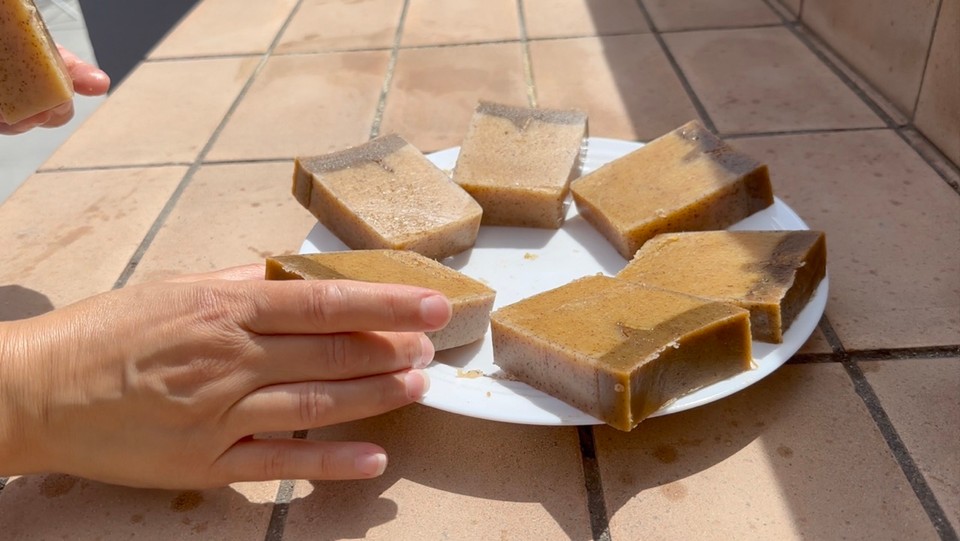
The presence of bananas in soap can accelerate the trace of the soap batter due to the sugars they contain. This acceleration can lead to a quicker thickening of the soap mixture, which might impact your capacity to create intricate or detailed designs in the soap. Therefore, I prefer a simple design (mixed with clay for colors) or no design.
To add the banana, you need to reduce the banana amount from the original water amount in the recipe. I already calculated the reduced water in the recipes in this post, so there is no need to make adjustments.
If you tried my oats soap bars recipe and like the natural additives in your soaps, I recommend making this banana soap with creamy and fluffy lather.
You can also save all the scraps from trimming the soap ends and make this soap design using your scraps.
Another soap you might like is the Dead Sea clay soap.
The only design I made in this soap was adding some yellow clay to a small part of the soap batter and adding this part on the top of the soap. You can skip this and pour all the soap batter without the clay.
To mix the clay, I have used some of the amounts from the distilled water, so if you use around 15g of the distilled water, you need to reduce this amount so you won't have excess water in the soap.
If you don't add clay, just use the amount indicated in the recipe.
You can also add the clay to one part of the soap batter without mixing it with water beforehand.
For this soap, I reused a juice box for my mold. I clean the juice box with soapy water and let it dry for a day before making the soap.
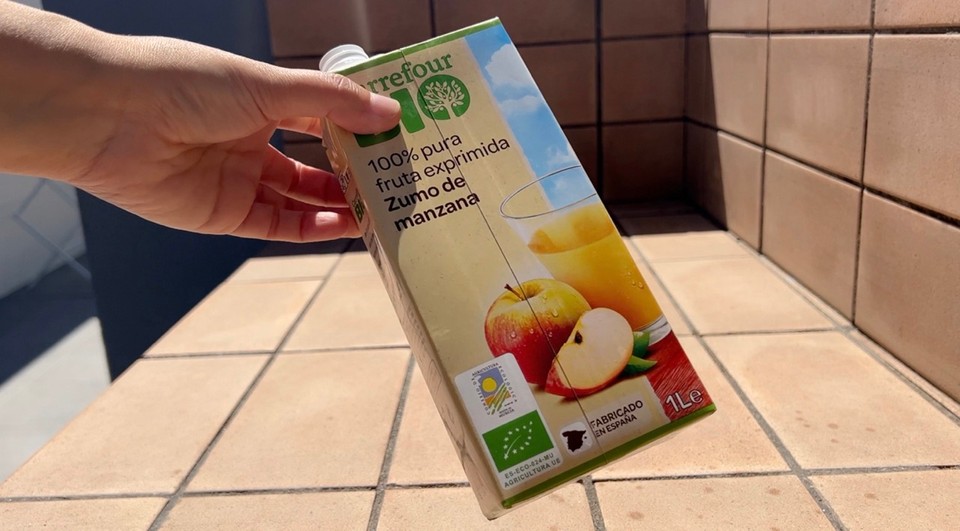
Using juice boxes for soaps is a great way to reuse things we have in the kitchen, and you don't need a particular soap mold to make soap.
You can use milk boxes as a soap mold like the juice box I used.
Once the soap is ready after 24-48 hours, you cut the box and put it in the recycle bin.
When the soap is ready, I cut it with a regular kitchen knife.
For soaps, the only essential tool is a high-speed blender to emulsify the lye solution with the oils.
As you noticed in the video, I forgot to seal the tap of the juice box, and when I poured the soap batter, some batter spilled outside the box. You can seal the tap before pouring the soap batter to prevent that.
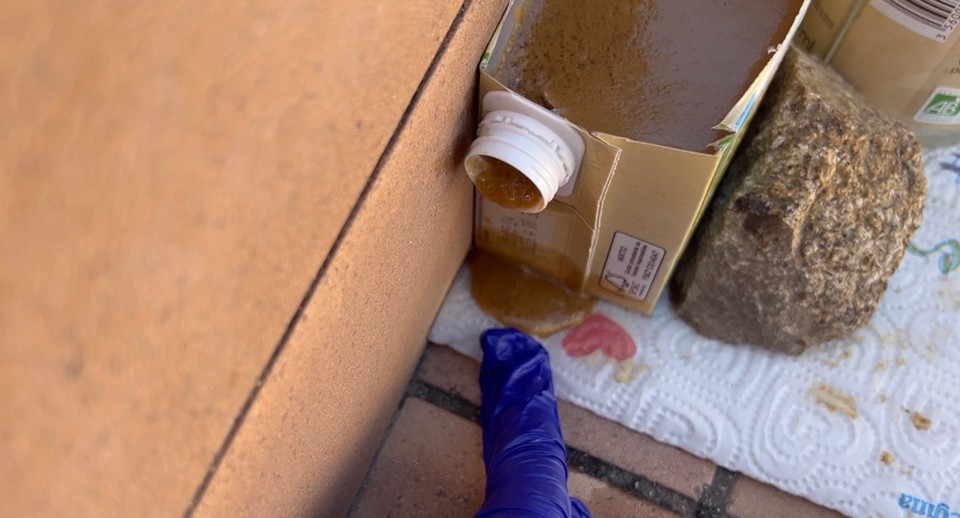
I have used essential oils in this recipe. I used 50% jasmine essential oil and 50% vanilla essential oil.
You can use other combinations of essential oils, such as lavender and pine needle, sweet orange with vanilla, lavender with vanilla, lemon with cedarwood or ylang-ylang with bergamot. I love the combination of jasmine and vanilla for this soap recipe.
You can make this soap unscented. For very sensitive skin, it is recommended to use unscented cosmetics products. In soap recipes if you choose to make an unscented soap, skip the essential or fragrance oils. No need to adjust the recipe or change the other amounts.
In this recipe, I blended the banana with the oils to incorporate it; this way, when you add the lye solution and mix, the emulsion is already smooth and homogenous.
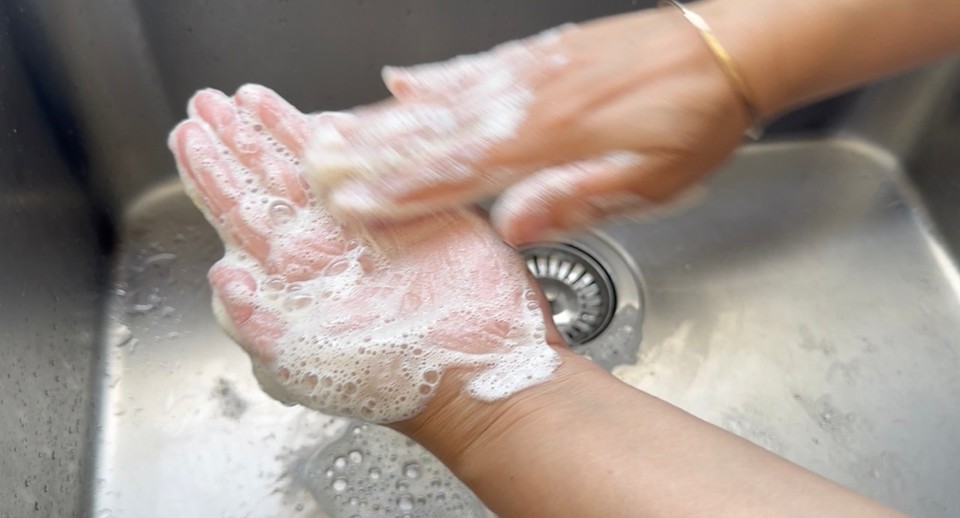
I added the coconut oil to a pan with the butters since, normally, coconut oil is a hard oil that needs to be melted. However, it is a very hot summer this year, and the coconut oil is in a liquid state. If you are in a colder climate, your coconut oil will be solid and need heating to be melted (with the butters).
The recipe has a water discount to balance the banana; I found that with fruits added to soap, the soap tends to be softer. To balance the softness, I reduced a little of the water amount.
I added 4 different amounts of soap recipes so you can use the amount that suits the mold you will use. 600g recipe is good for the juice box size.
Use eyes and skin protection when making soap
Ingredients for 600g:
- Distilled water 100g
- Banana 60g
- Lye (sodium hydroxide) 83
- Coconut oil 132g
- Cocoa butter 120g
- Mango butter 36g
- Sunflower oil 132g
- Olive oil 156g
- Castor oil 24g
- 1½ tbs yellow clay (optional)
- Essential oil 16g (optional)
Ingredients for 800g:
- Distilled water 135g
- Banana 75g
- Lye (sodium hydroxide) 111g
- Coconut oil 176g
- Cocoa butter 160g
- Mango butter 48g
- Sunflower oil 176g
- Olive oil 208g
- Castor oil 32g
- 2 tbsp yellow clay (optional)
- Essential oil 20g (optional)
Ingredients for 1000g:
- Distilled water 160g
- Banana 95g
- Lye (sodium hydroxide) 138g
- Coconut oil 220g
- Cocoa butter 200g
- Mango butter 60g
- Sunflower oil 220g
- Olive oil 260g
- Castor oil 40g
- 2 ½ tbsp yellow clay (optional)
- Essential oil 22g (optional)
Ingredients for 500g:
- Distilled water 94g
- Banana 46g
- Lye (sodium hydroxide) 69g
- Coconut oil 110g
- Cocoa butter 200g
- Mango butter 60g
- Sunflower oil 220g
- Olive oil 260g
- Castor oil 40g
- 2 ½ tbsp yellow clay (optional)
- Essential oil 11g (optional)
Method:
- If you want to reuse a juice or milk box, clean it and let it dry. When the box is dry, cut the upper part of the box.
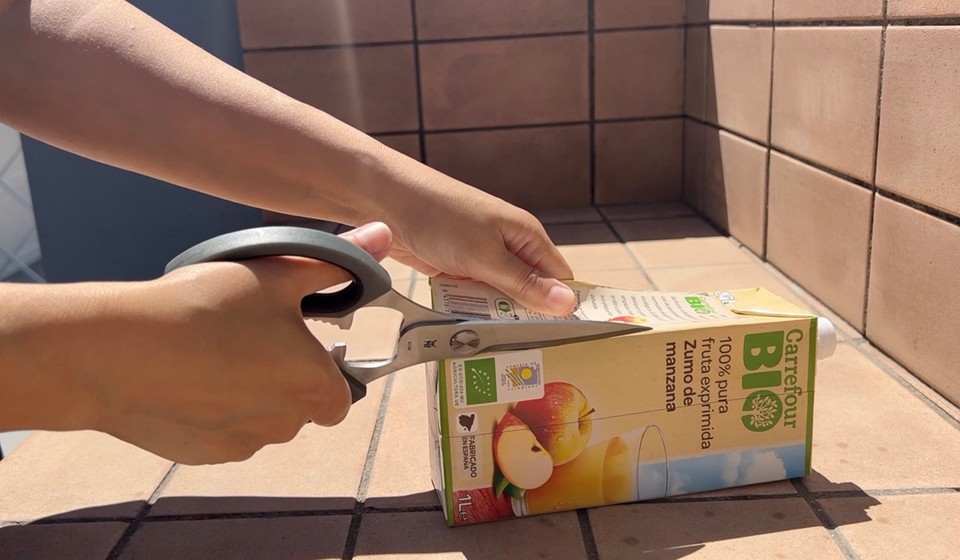
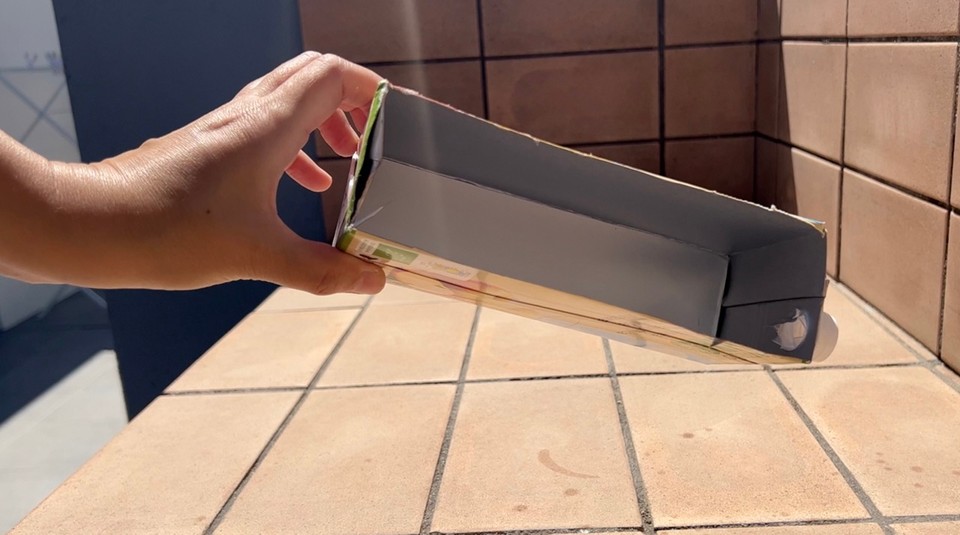
- weigh the banana in a container, and set aside.
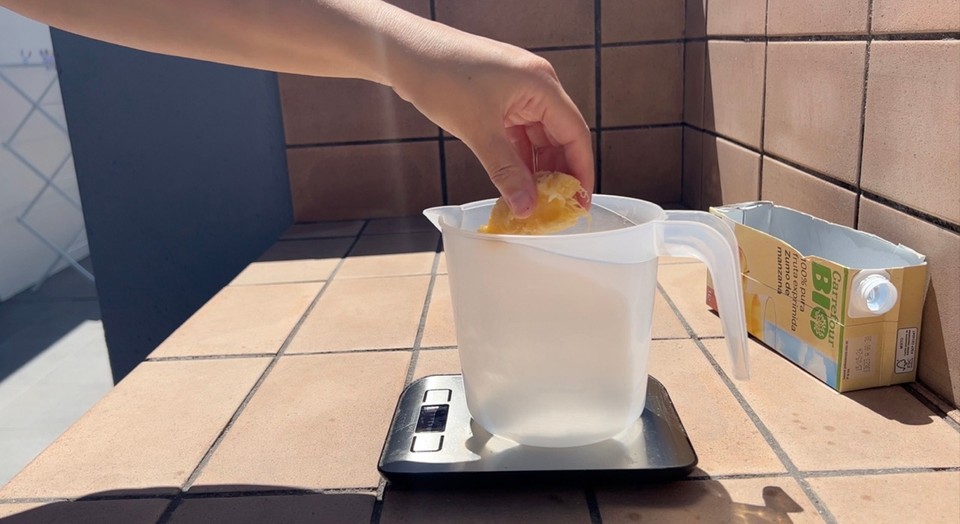
- Add distilled water to a heat-resistance bowl.

- Add the lye (sodium hydroxide) to the water and mix to dissolve. Set aside.
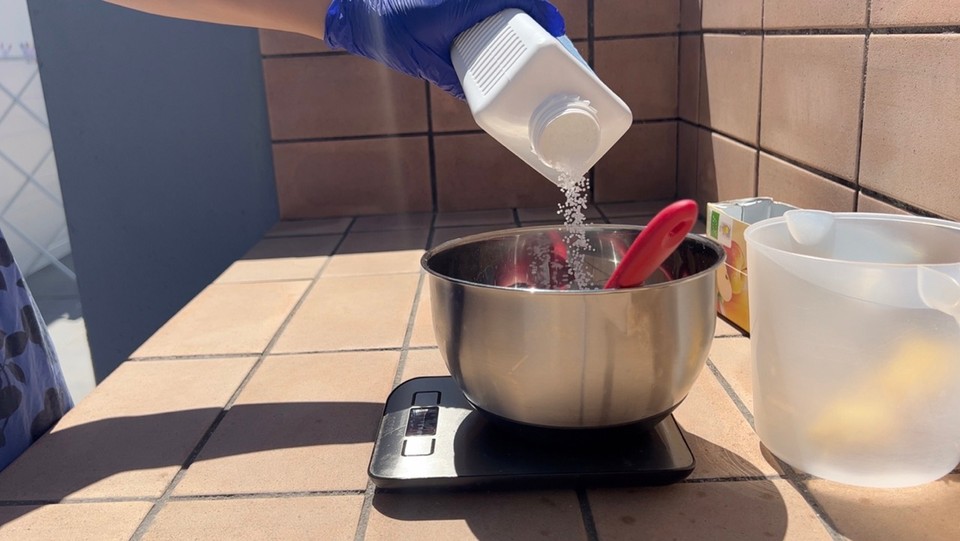
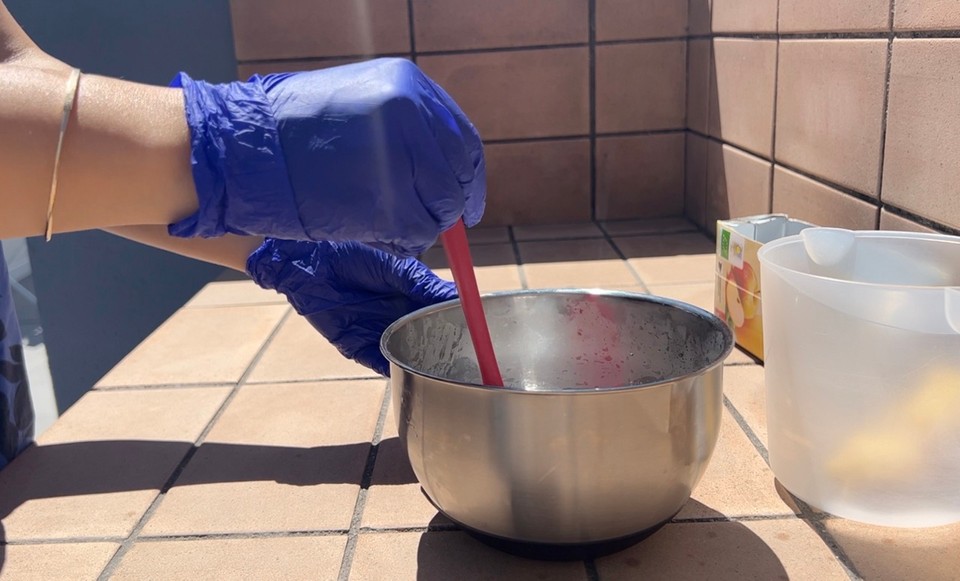
- In a pan, weigh the coconut oil and the butters. Place on the stove on low-medium heat to melt.
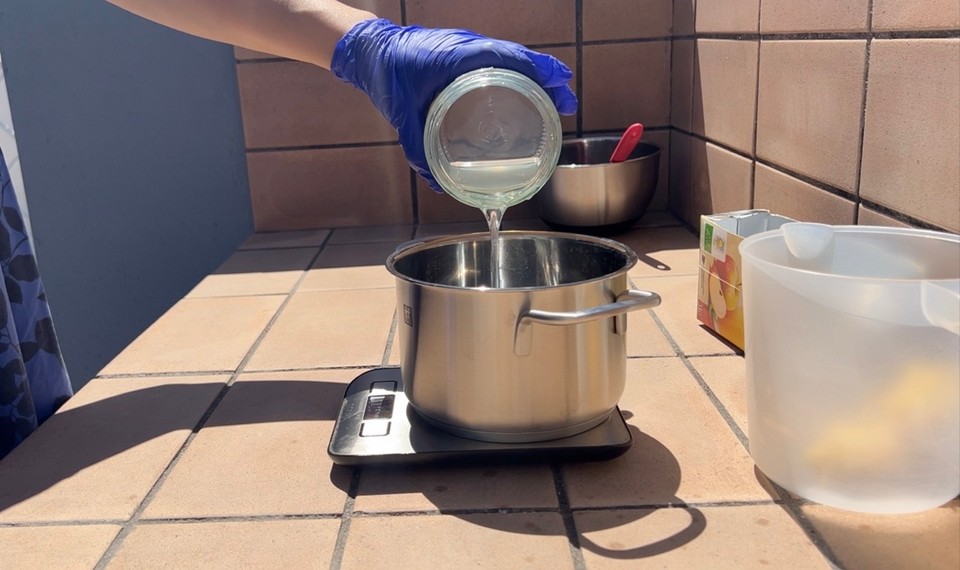
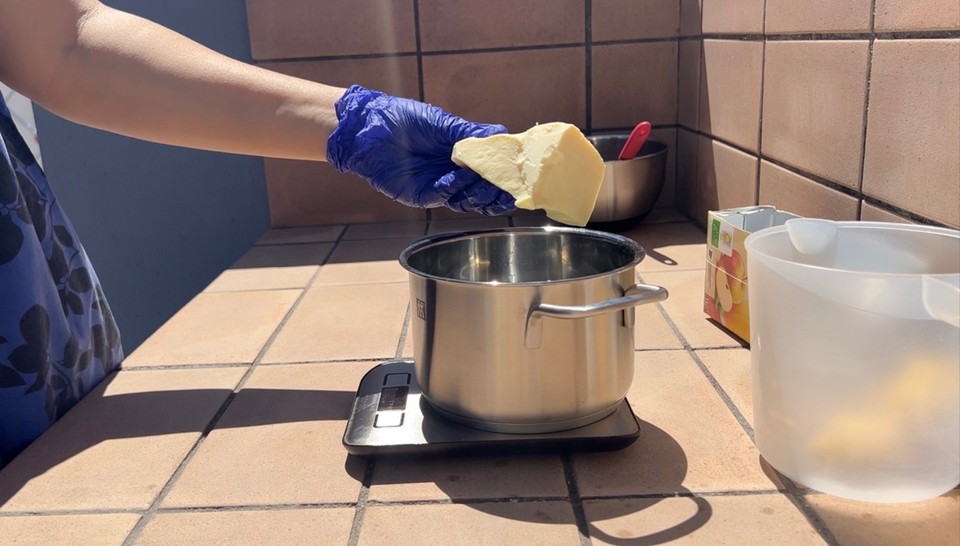
- In another container, weigh the liquid oils.
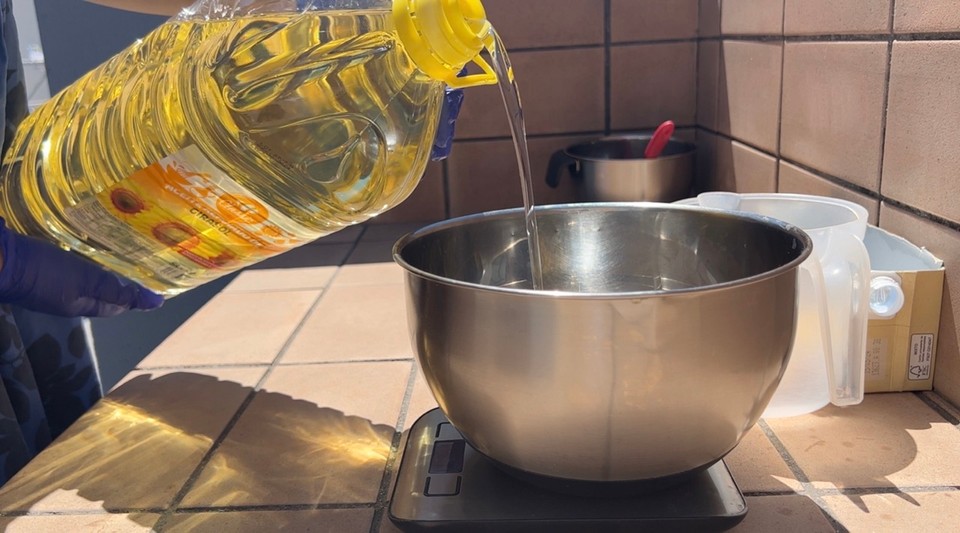
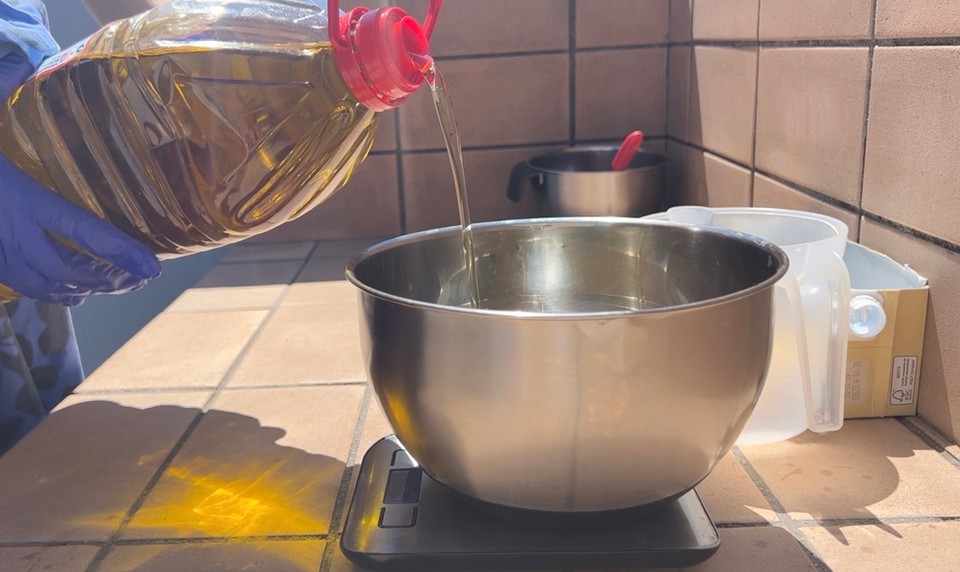
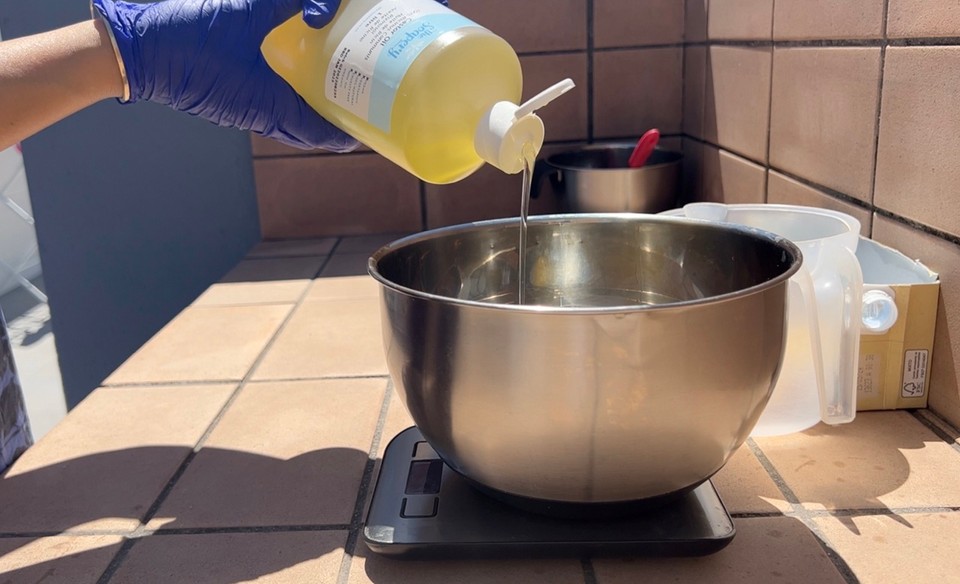
- Add the banana to the oils and use an immersion blender to mix the banana with the oils.

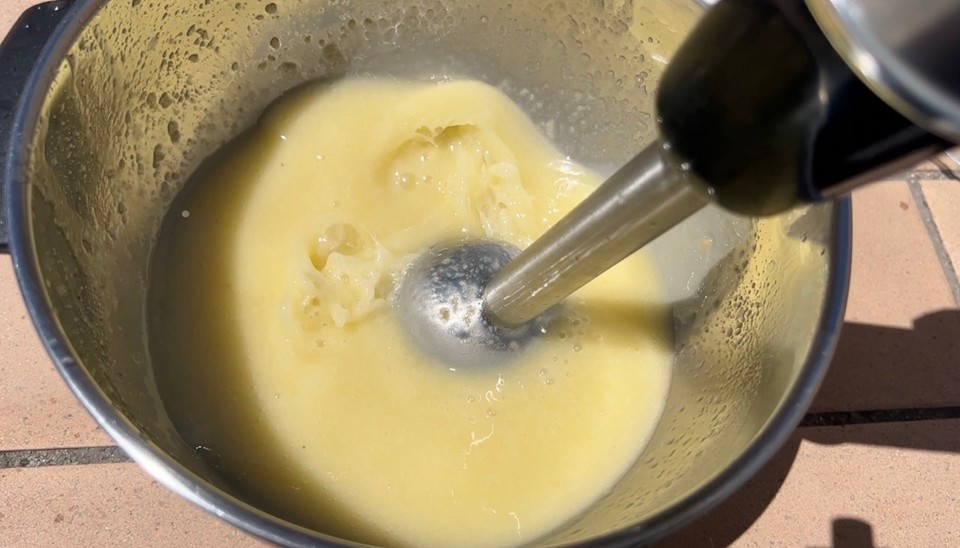
- Add the melted coconut oil and the butters to the liquid oils.
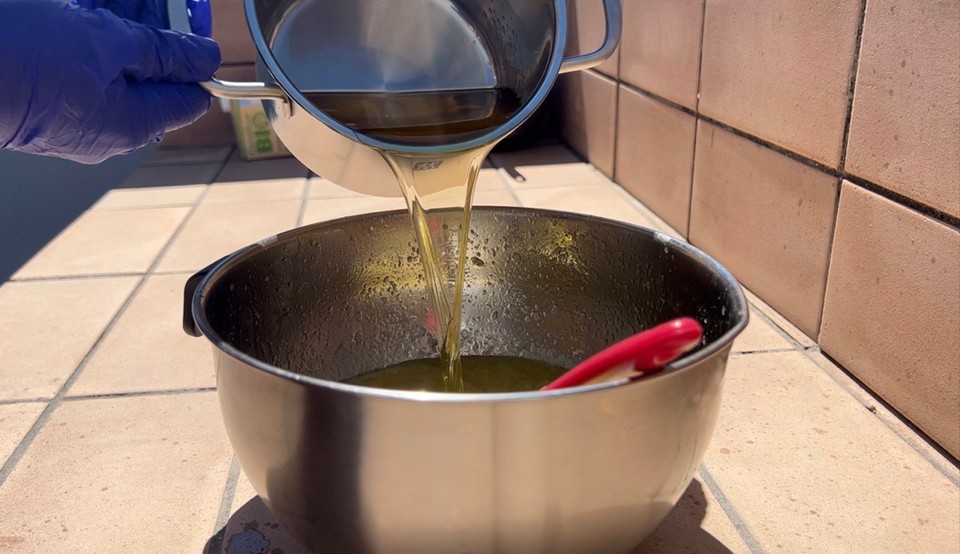
- Prepare a container with clay mixed with some water. Set aside. If you are not using clay, skip this step.
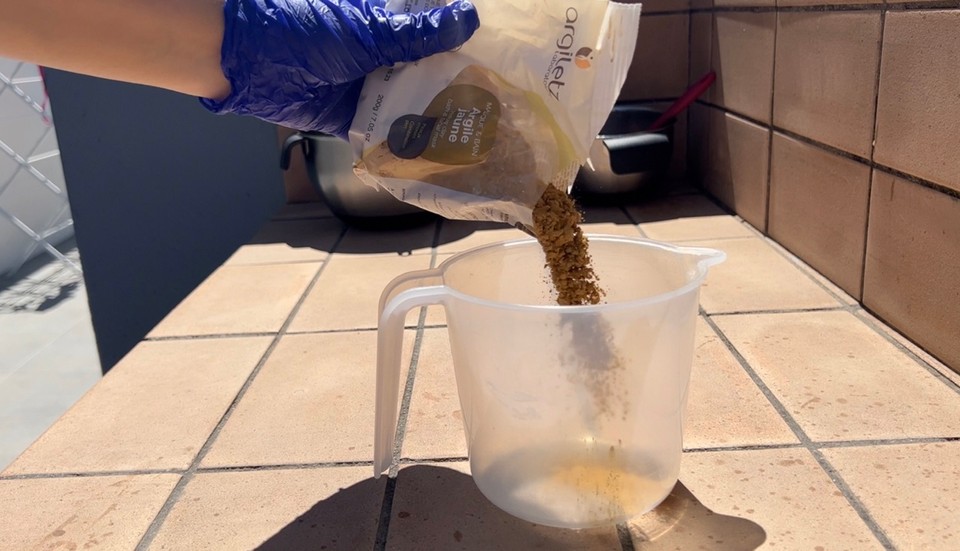
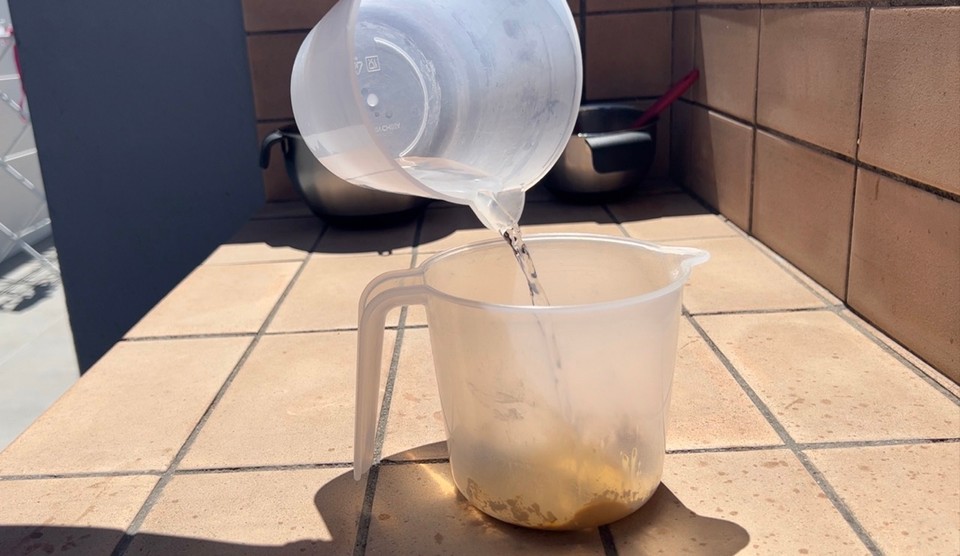
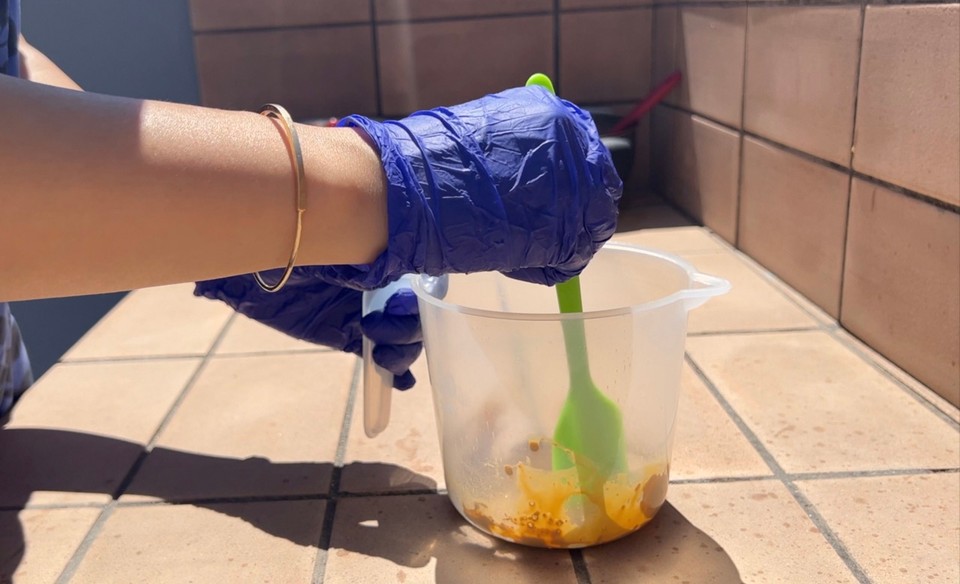
- check the temperature of the lye solution and the oils. I recommend mixing the lye into the oils at a temperature of 35-45 degrees celsius (120 fahrenheit), the lye solution and the oils should be more or less at the same temperature.
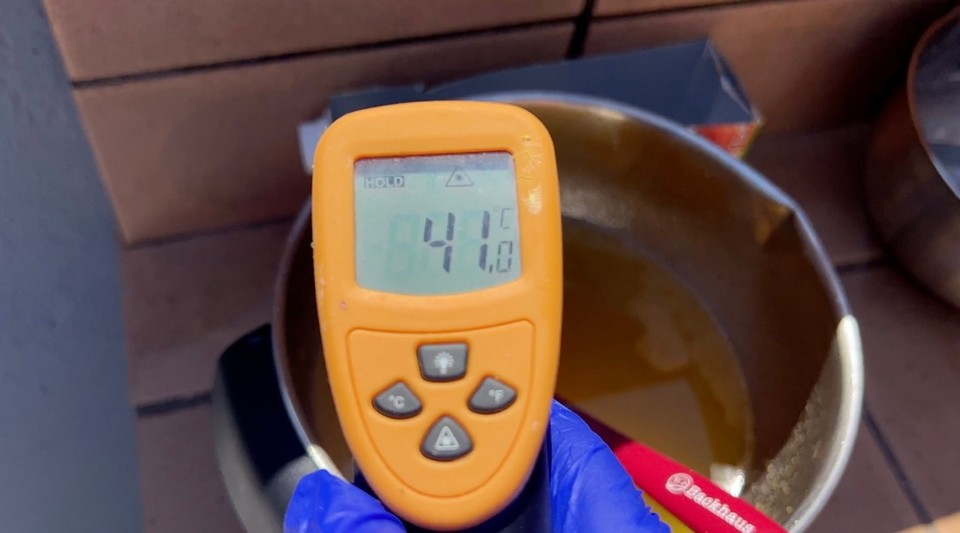
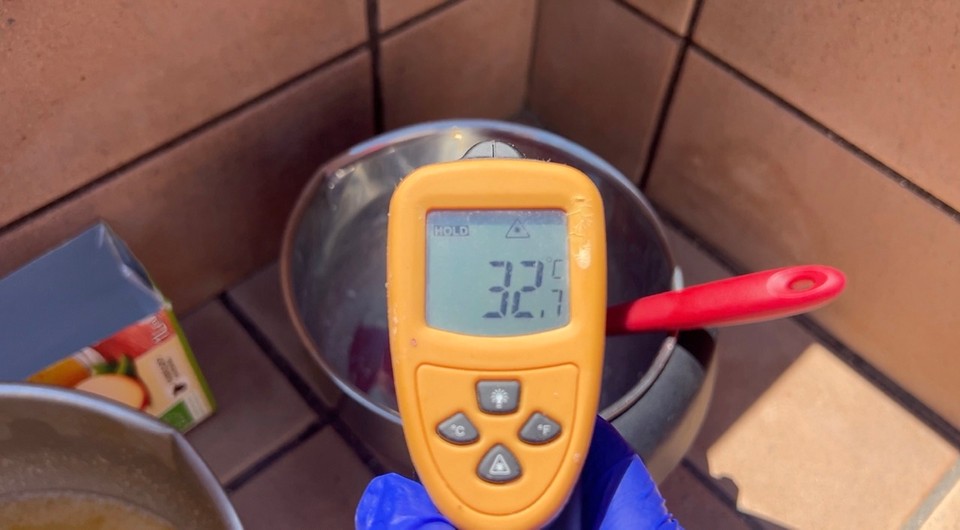
- Add the lye solution to the oils. Use an immersion blender to emulsify. Don't over-blend. Once you reach a light trace, stop blending.
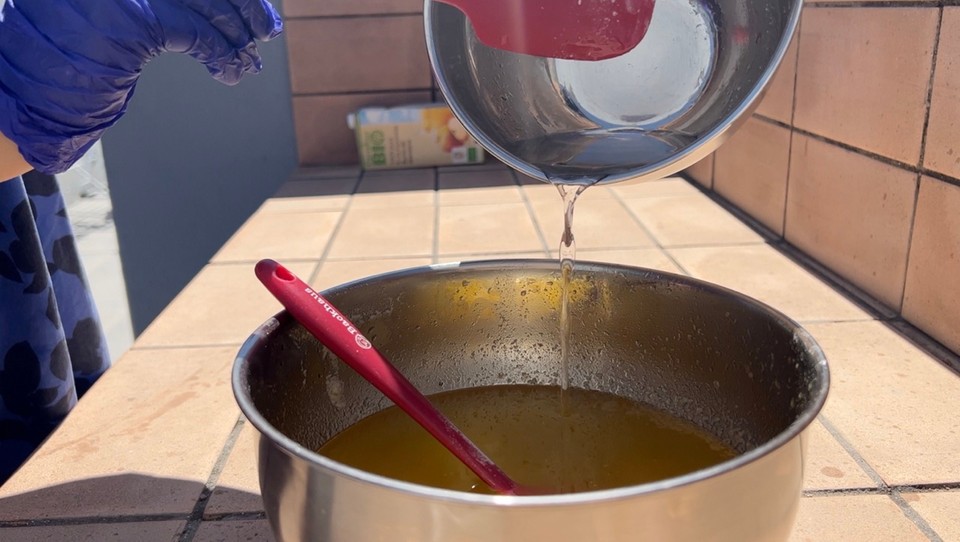

- Pour a little soap batter into the container with the clay mix and stir to combine. Set aside.
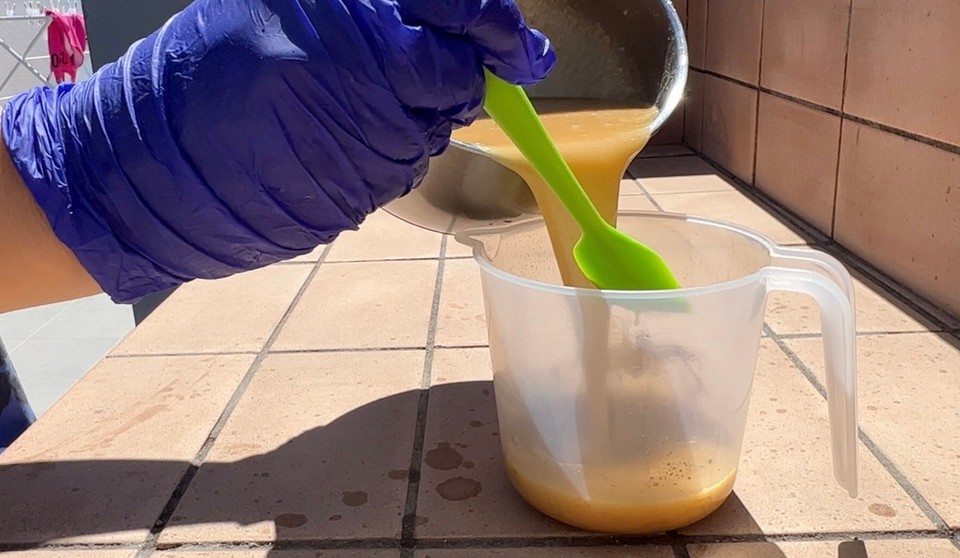
- Add the essential oil blend to the soap batter and mix.
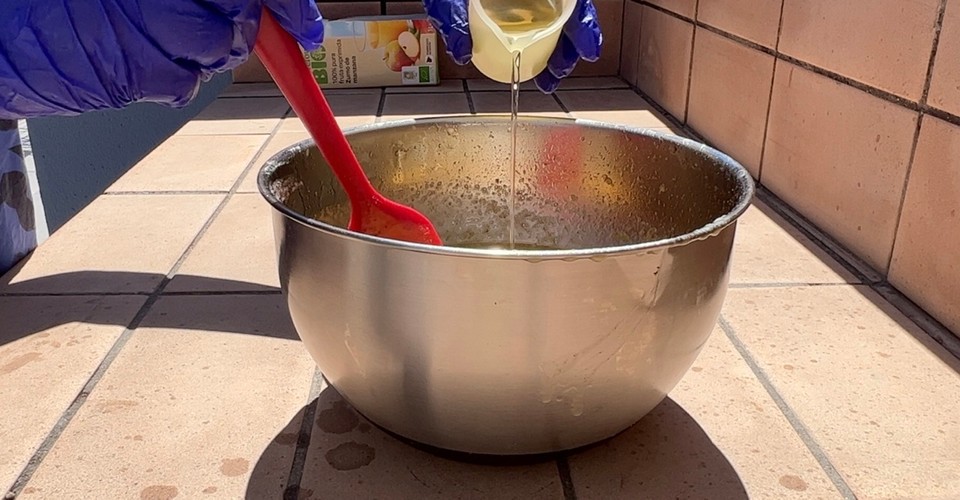
- Pour the soap batter into the box.
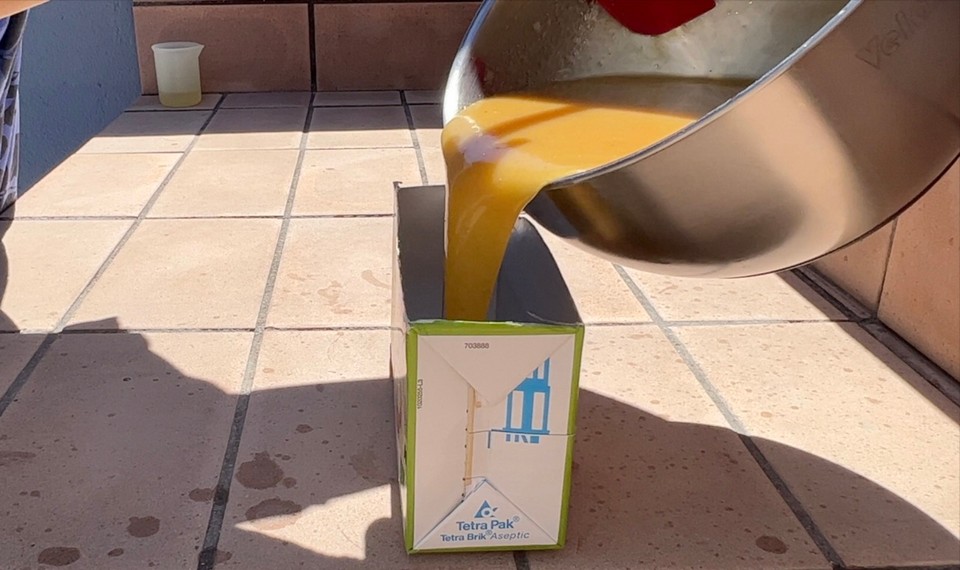
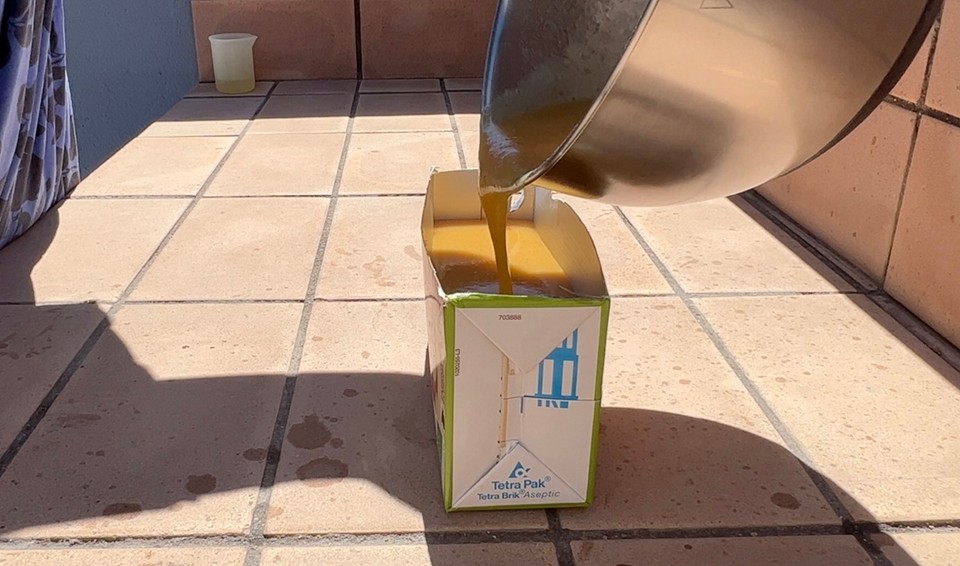
- Add the essential oil blend to the colored clay soap batter and mix.
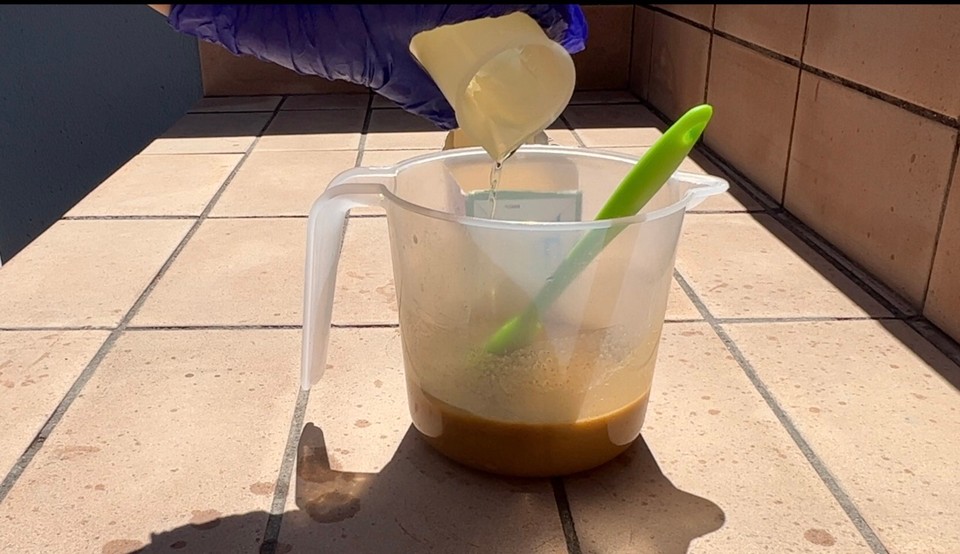
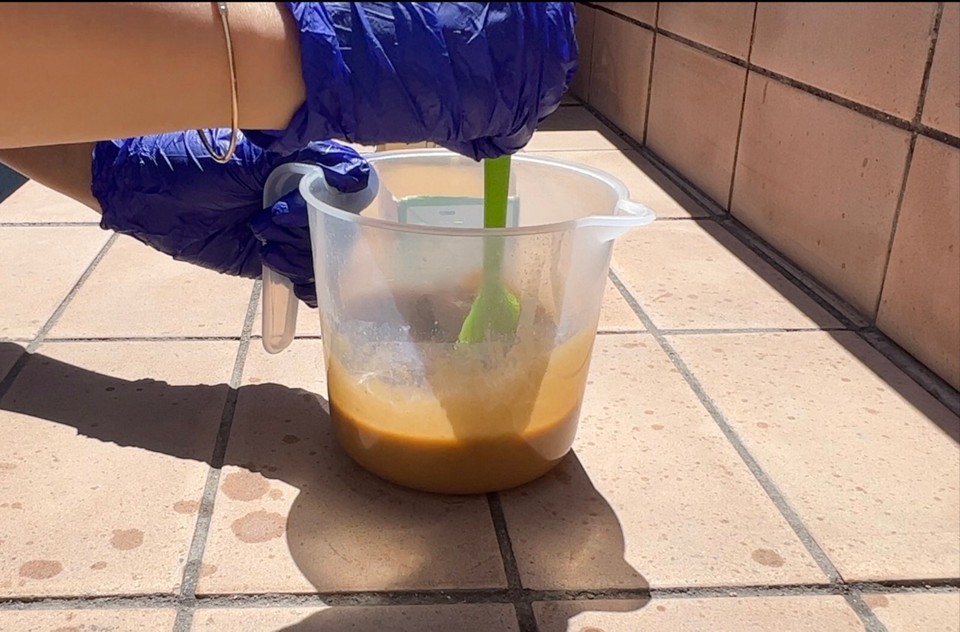
- Pour the soap batter with the clay on top.
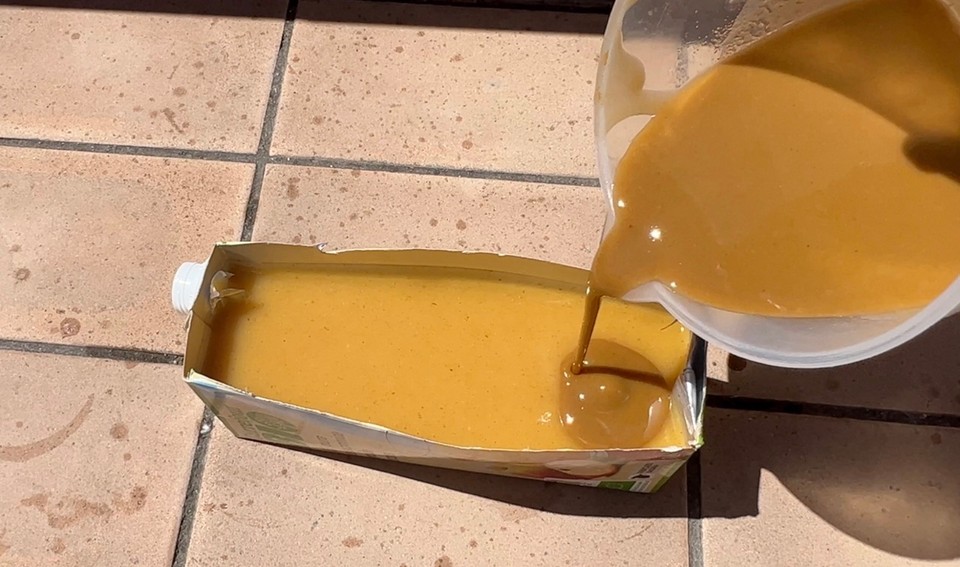

Leave the soap to solidify for 24-48 hours.
unmold the soap. If you use a box, you can cut it from the sides to release the soap.

- Cut the soap into bars.


- Leave the soap bars to cure for 3-6 weeks before using.
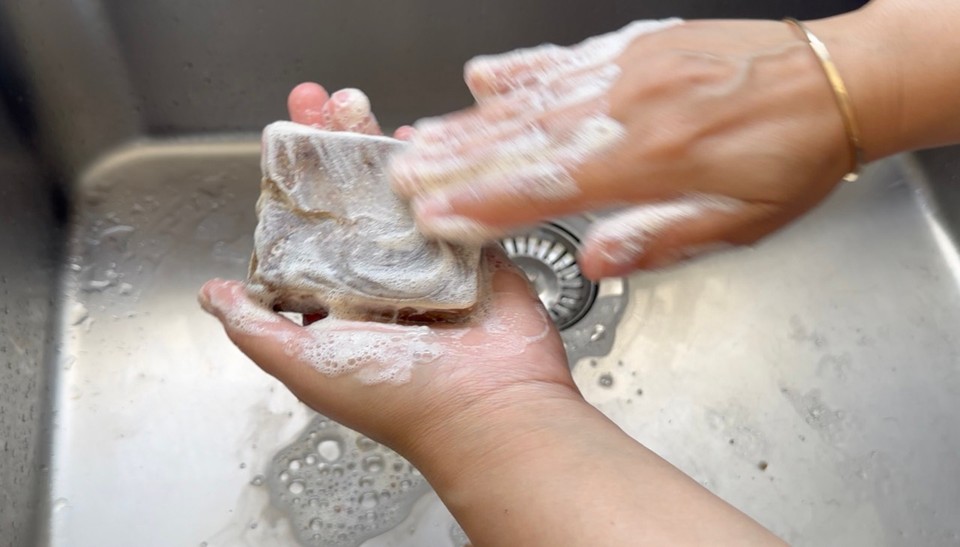
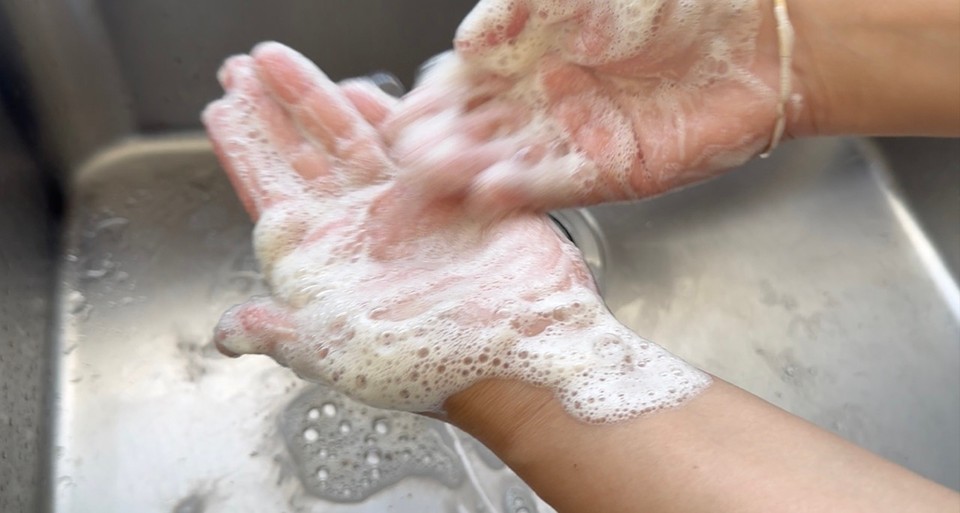
- If you trim the soap edges, place them in a box or a bag and make the whipped sugar scrub from soap scraps with them.
